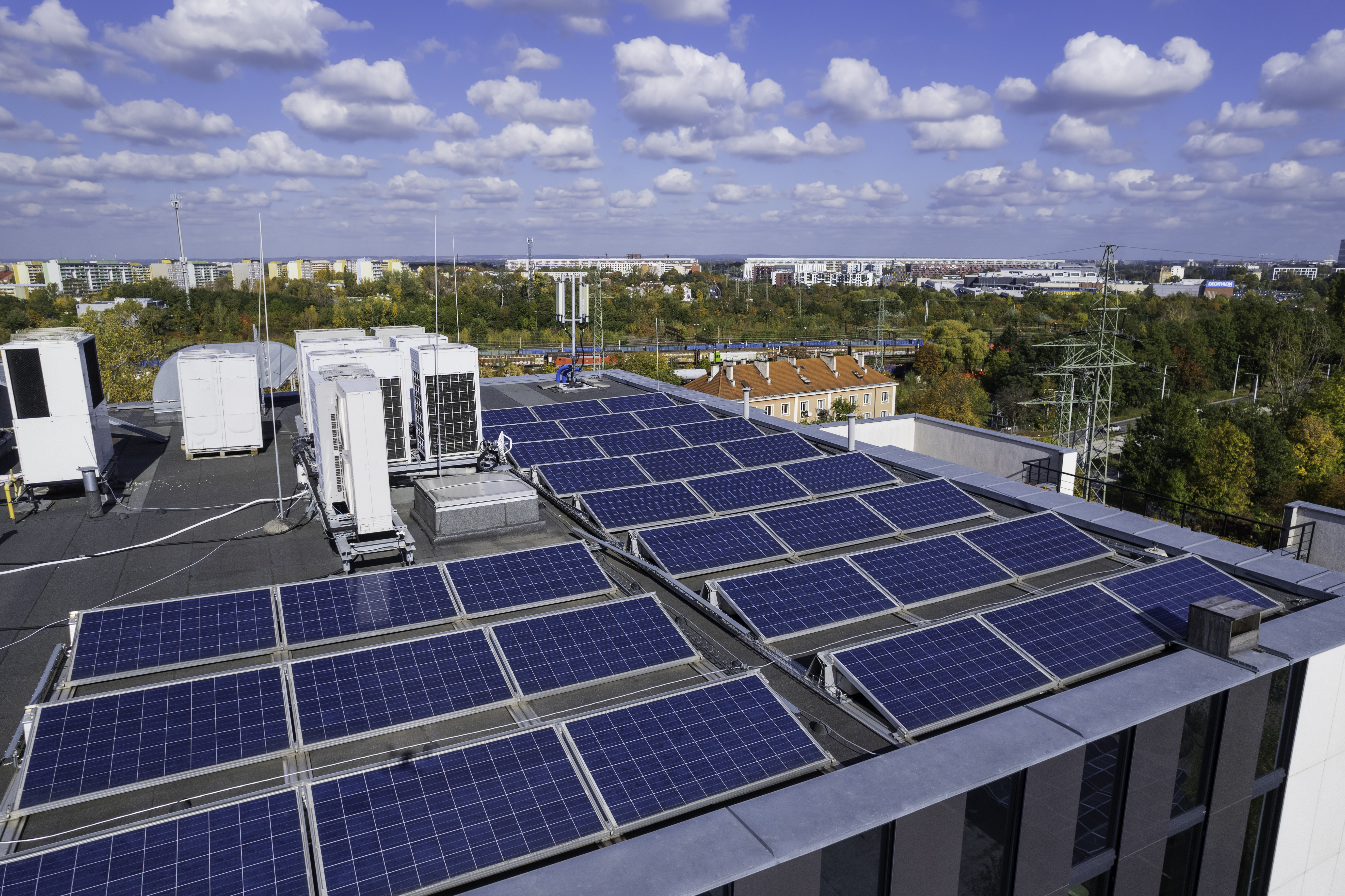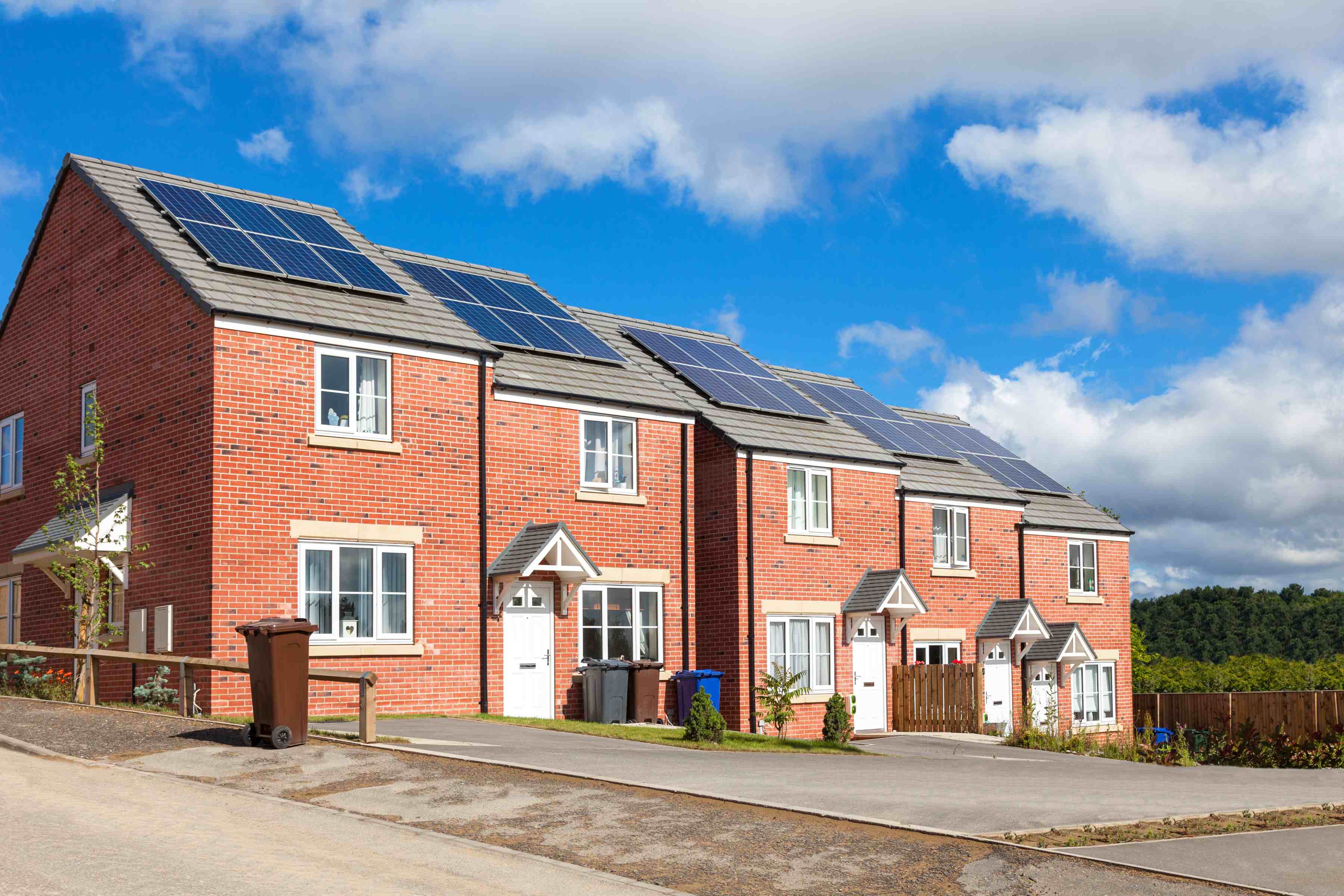Considerations for larger-scale PV projects

What makes a good larger-scale PV project?
Generally, larger-scale PV projects will be those that are pursued by local authorities or community groups, though if you are a tenant in a block of flats and you want PV you may have to go through many of the steps discussed in this guide.
At CSE we offer a range of guidance and support around setting up a community energy project, with more information available on our website. But read on for more specific advice regarding PV installations.
Good places for projects
A good site for a larger-scale PV project follows many of the same rules as for a smaller installation, such as a south-facing roof. You can assess this through Solar Wizard but there are additional considerations when considering a larger project. The simplest consideration is size – you generally want to target buildings with large rooftops. Preferably, these buildings will then have ‘simple’ ownership arrangements – normally a single owner, rather than multiple owners of units or flats within a building. One place you can check the ownership of a property is on the government land and property information pages.
You also want to consider the use of the building. The best returns from solar PV come where the electricity generated is used on site. So look for high energy use, particularly during daylight hours. For example, schools often use most of their energy between sunrise and sunset which matches the generation of electricity by solar PV.
Once you have identified a potential building, it is time to approach the site owner or manager and get information to evaluate if it makes financial sense. You will want to know the lease length (in other words how long you can install your PV for), and the current price being paid for electricity. If possible, energy bills or meter data can also help to calculate future savings and demonstrate these to the site owner.
What do I need to consider in a larger-scale PV project?
You’re likely to encounter many additional issues in a larger-scale PV project than in an individual one. We suggest you refer to the expert guidance at places such as Community Energy England, Scotland or Wales (link to these websites are provided below), or Community Energy London for more details.
On the legal front, you will need to form a recognised legal entity – for example a community interest company. Community Energy England offers resources to give you more information about this. You will then probably encounter many legal arrangements such as agreements covering site access, liabilities and insurance, and end-of-lease arrangements. You will also need to consider financial arrangements – are you going to arrange a power purchase agreement with the site owner, for example? Pure Leapfrog offers a legal toolkit which may help.
Whilst your project may fall under permitted development, you may also have to apply for and acquire planning permission, even outside of protected areas (such as National Parks). This may be because of the size of installation, or because of the type of building on which the panels will be installed. Your local authority should provide you advice if planning permission is required. (See ‘Factsheet 2 - What should I consider before installing panels’ for more information on planning permission.)
You almost certainly will need to apply to your distribution network operator (DNO) because of the amount of electricity you will be generating. This may incur connection charges, and in some cases a charge for upgrading the electricity grid. The former should be budgeted for, whilst the latter is likely to be far too expensive for a group to manage. The Energy Networks Association has produced a range of detailed technical guidance on grid connection, including a specific guide for community energy projects.
Inspiration
There is a lot to consider for a larger-scale PV project – and it can seem like it’s impossible to achieve. But that’s not the case! Lots of groups have succeeded before, and we give some examples below for inspiration.
During the PlanLoCaL project, we worked with West Oxford Community Renewables who installed PV on the rooftop of a local school – without supportive tariffs.
Another idea is to start a bulk buying scheme – this could be group buying solar panels, special tariffs for gas or electricity, or anything you could imagine. We’ve produced a video talking about how to get a bulk buying scheme started.
Each nation within Great Britain has a community energy group – Community Energy England, Community Energy Scotland and Community Energy Wales. These provide examples and case studies from their member organisations, as well as lots of resources and support for establishing a community energy project.
Local Energy Scotland provides many case studies including PV used in different ways on all kinds of buildings. You can also see Community Energy London’s project map for more ideas.
Whilst these cover community energy projects – the process for a local authority is very similar. The exception may be in the involvement or interventions a local authority can make. For example, a local authority likely already has control of some buildings and that can simplify the process. Alternatively, a local authority may like to make funds and support available but leave implementation work to community groups – such as Islington’s community energy fund.





